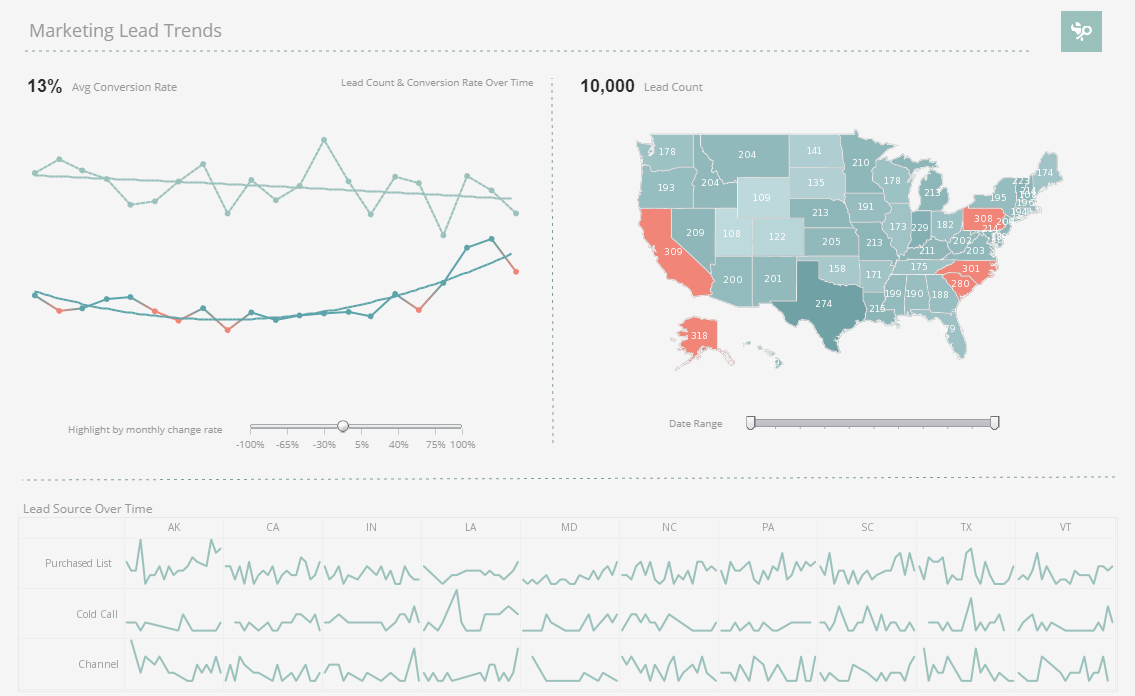InetSoft BI Webinar: Keyword Search Tools
This is a continuation of the transcipt of a Webinar hosted by InetSoft. The speaker is Mark Flaherty, CMO at InetSoft, and he discusses the topic “Analysis and Exploration: Matching Tools and Needs”.
Mark Flaherty: BI search is essentially a keyword search tool that kicks off dynamic queries for their reporting tools and OLAP tools. BI search and data mashup are really the way casual users are going to be doing ad hoc navigation analytics so to speak. That’s why I have it connected by that green line. Now if you move up on the data volume side, you will see connected by red lines are various tools that are categorized as ad hoc tools for power users. And that includes your traditional ad hoc query and reporting tools that have been around for a while as well as new visual discovery tools that provide “speed of thought” analysis and very interactive charting and visualization on a predefined data set for the most part.
And then there is a tool called managed Excel: these are all these new extensions to Excel to make it a more managed environment, using Excel really as a client to server-based environments. We have got thin client Excel, where Excel works only within a browser, running Office Server. There is Excel as a client to BI tools, Excel as a client to OLAP databases. And then we have got these turbocharged desktop pivot environments. The latest is PowerPivot from Microsoft, where it the add-in puts in-memory database capabilities right on your laptop, allowing you to store not just 64,000 records but, maybe hundreds of gigabytes of data on your laptop and do speed of thought analysis against that in Excel environment.
| #1 Ranking: Read how InetSoft was rated #1 for user adoption in G2's user survey-based index | Read More |
Of course these turbocharged spreadmarts stay outside of the IT department. But they are managed in a sense that once users want to share that information, it moves up to a server. In the case of PowerPivot, it’s managed in a SharePoint environment where users can collaborate on the information and IT can monitor and manage to some extent what users are doing out in the field.
And certainly anyone who wants to use the output of PowerPivot through SharePoint is going to install it n a thin client environment. Then moving up a little bit and over to the right we have our traditional multi-dimensional analysis tools, our ROLAP tools and MOLAP tools. ROLAP is Relational OLAP where we are providing dimensionalized views of information against large volumes of data as large as you have, as much data as you have in your databases. This is what ROLAP tools can address.
On the other side our multi-dimensional OLAP databases are databases that provide more sophisticated calculations against dimensional data, but not as much data. So smaller volumes, faster response times than ROLAP and more sophisticated calculations. And also the ability to what-if modeling, essentially writing back to the database. And for, what-if modeling, we also see now the advent of planning tools as well as Excel for planning and budgeting type applications.
And finally upper in the right-hand quadrant are the analytical modeling tools, traditionally our data mining workbenches that run on a desktop or in a client-server mode, for running neural networks and decision trees and various other machine learning algorithms. We are beginning to move a lot of the work that’s done on these workstations into the database, which is why that there is a dotted line to a box called database analytics.
Read what InetSoft customers and partners have said about their selection of Style Scope for their solution for dashboard reporting. |
When we start moving those functions into the database, we no longer have to sample data while building our models, or move large volumes of data down from the database to our workstation, which causes all kinds of problems. Also there is text analytics, and now the burgeoning volume of social media. Text analytics is really coming into its own, where we can start to gauge the sentiment that our customers and prospects have about our brand and our products. Companies have been applying text analytics for years to things like warranty analysis, customer service applications and other applications where users or field agents write notes in various places in the applications.
And then finally there is the analytical engine, these MPP machines and in-memory databases that can handle large volumes of data at much lower cost than ever before and can power these more sophisticated types of analytics.
| Previous: Analytical Sandboxes |



